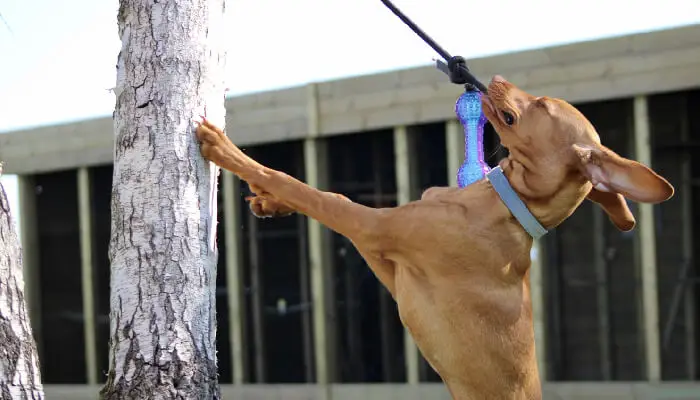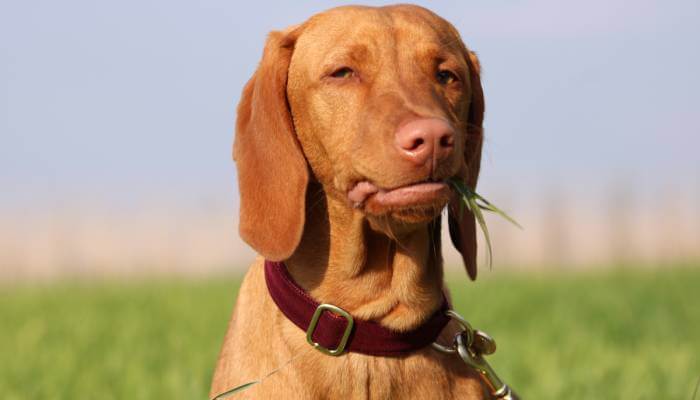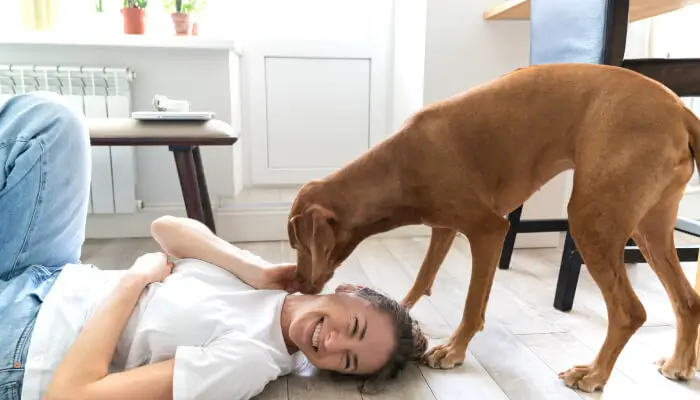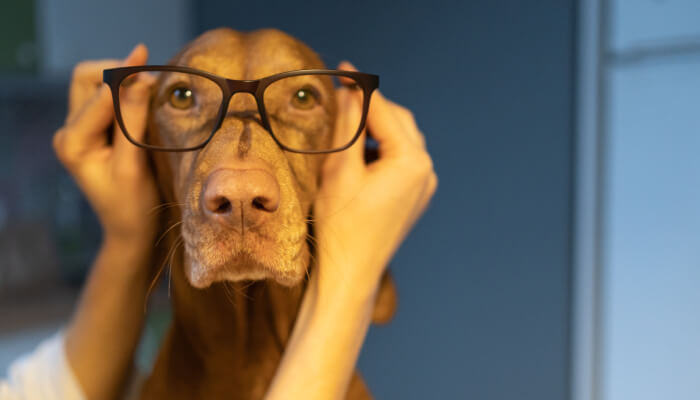Vizslas are Hungarian hunting dogs that are famous for their hunting skills. They have a very distinctive appearance characterized by the “v” shape on their forehead and color different from many other breeds, typically golden-brown. But what about the growth stages of Vizsla? Do you know how long it takes for a Vizsla to grow?
If not, don’t worry!
There are many stages of Vizsla growth, and some are easier than others. For example, the neonatal period is when your new pup needs constant attention, while the ranking period is where they require less care and more playtime with other dogs. As long as you provide them with adequate exercise, nutrition, care, and attention, your vizslas should reach full size in about 18 months- 2 years!
Many things influence the growth rate of Vizslas, such as genetics, diet, environment, health issues experienced, and owners care for them.
In this article, we will break down each stage of the Vizsla growth process so that you can be prepared.
Vizsla Growth Stages
Vizsla growth stages are generally three periods of time that will give you a general idea of what your puppy will be doing at any given point in its life. These stages will determine the size of your Vizsla as well.
Neonatal Period:
During this stage, puppies should have their eyes open, and they grow rapidly during the first month, doubling in size.
Transitional Period:
It is when Vizslas are between two and four months old.
During the transition period, your Vizsla is going to start to explore its environment. As a result, it will be a much more active and intelligent dog than in the neonatal stage.
Socialization Period:
At the age of four to six months, Vizslas are going through a socialization period. At this point, your Vizsla will start noticing other dogs of their opposite sex and may begin to have some rough play with them. Their diet should also change for optimum growth and the best development of bones and muscles.
The socialization period is when you will expose Vizslas to outside people, animals, surfaces, toys, and other things that may not have been in their care before. It is also an excellent time for you to get your puppy used to being handled by new people and new situations.
Ranking Period:
Vizsla ranking periods go from eight weeks up until about three years old.
This is when Vizslas will start showing their dominance with other dogs, fighting for rank. Of course, you might also see aggressive behavior in your dog, but this is normal during the ranking period.
Male Vizslas Will Start To Rank At This Stage while Female Vizslas Don’t Start Raking Until They’re Older.
Adolescence:
With a Vizsla that lives up until puberty, you can expect it to stop growing at around two years old.
Vizsla Growth Chart – What To Expect From Vizsla Growth Stages:
The growth of a Vizsla is going to depend on the genetics and diet in their environment. With that said, you can expect your baby Vizsla to be between 12-14 inches long when they reach adulthood. The weight of your Vizsla will also depend on the environment and diet.
Vizslas will grow faster during this time, so we’re looking for anywhere from six weeks up until about eight months old. The color of their eyes will also change around the age of two months; it’s usually not noticeable, but you may want to keep an eye out for it.
(Add a chart here from google)
How Long Until Vizsla Is Fully Grown?
With a healthy dog that is taken care of properly, it should take about 18 months before they are fully grown. But, of course, if there has been any illness or injury in their young life, this time frame may increase.
A fully grown Vizsla will reach about 18-19 inches on the wither, and they should be between 55 to 70 pounds. But, of course, the time it takes for a Vizslas to grow is going to depend on how healthy your dog’s genetics are and what kind of diet you’re feeding them.
At What Growth Stages Does Female Vizsla Stop Growing?
Female Vizsla will stop growing at around two years old, and they’ll reach about 17 inches on the withers with a weight of anywhere from 30-45 pounds. The time it takes for them to grow depends on their genetics, diet, and environment.
When Do Vizslas Stop Growing And Reach Full Size?
A fully grown vizsla will reach adulthood at around 18-19 inches on the wither with anywhere from 55 to 70 pounds. The time it takes for your dog to grow depends on their genetics, diet, and how healthy they are.
Factors That Influence The Growth Stages Of Vizsla:
Various factors play a crucial role in deciding what happens with your Vizsla.
Genetics
If you have a vizsla with good genetics, they will grow to their full size in about 18 months. However, with that said, if your dog has terrible genes or there’s some illness going on in the family, then it could take anywhere from two to three years.
Diet And Nutrition
The diet and nutrition of a Vizsla will play an essential role in the growth factor as well. With that said, if your dog eats a lot of fatty foods or has been fed unhealthy food, it will have stunted growth throughout its life span.
Exercise
The amount of exercise your Vizsla gets will also play a role in their growth. With that said, if you’re not getting enough time to go for walks with them or give them some outside activity, then it could slow down the process as well.
Care And Attention
Another factor would be care and attention. With that said, if you’re not paying attention to your Vizsla and don’t give them the love they need, this can also speed up or slow down their growth.
Prior Health Issues
If there’s been any illness in their life like worms, parasites, kennel cough, parvo, or anything like that, then it could also play a factor in the growth of your Vizsla.
Conclusion
In conclusion, Vizslas will start showing their dominance with different dogs and fighting for rank during the neonatal period. The time it takes your dog to grow is going to depend on genetics, diet, environment, health issues they’ve experienced in life, and care provided by you as a pet owner.
Good Luck!!!



